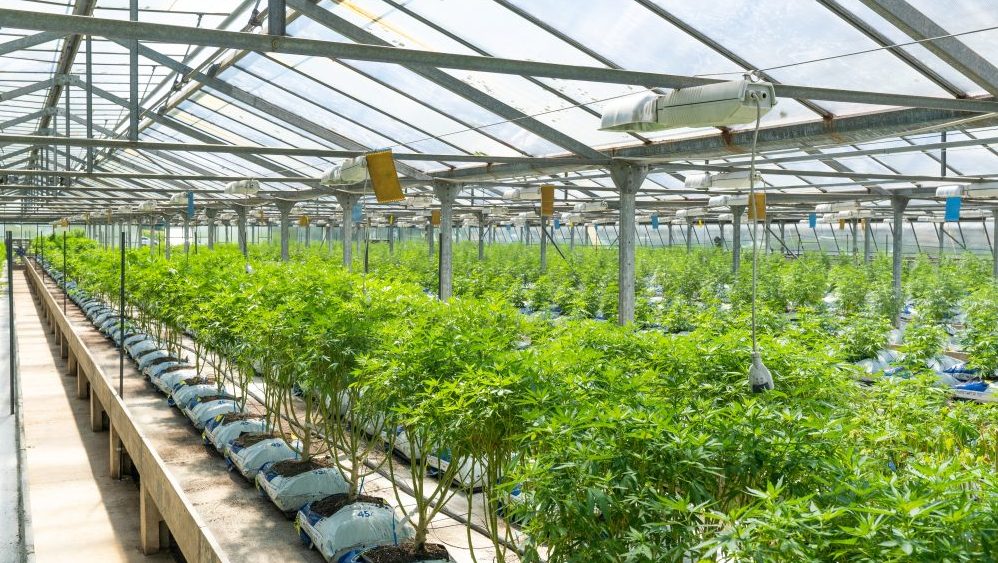The art of cultivating cannabis indoors is a rewarding journey that combines horticultural skill with a passion for the plant.
To excel in this endeavor, it requires more than just basic gardening knowledge; it demands an understanding of the specific needs and nuances of cannabis. This comprehensive guide delves into the core aspects of indoor cannabis cultivation, offering detailed insights and practical advice to enhance your home cannabis garden.

Selecting the Right Strain
Choosing the correct strain is foundational to your gardening success. This decision impacts not only the yield and quality of your harvest but also your overall cultivation experience.
- Strain Research: Begin by researching strains known for their suitability in indoor environments. Indica strains, for instance, are often preferred for their shorter stature and bushier growth, making them ideal for limited spaces. Conversely, sativa strains require more vertical space to accommodate their taller growth habit.
- Compatibility with Your Needs: Match the strain with your desired outcome, whether it’s for medicinal CBD-rich varieties or potent THC-laden flowers. Autoflowering strains offer a simpler cultivation process, automatically transitioning from vegetative growth to flowering, which can be particularly advantageous for novice growers.
- Expanded Insight: Consider the grow space constraints, the flowering time, and the yield of potential strains. Utilize resources like seed bank descriptions, grower forums, and cultivation journals to gather information on growth patterns and environmental preferences.

Optimizing Your Grow Space
The right environment is crucial for your cannabis plants to thrive. From lighting to air quality, every element should be carefully controlled.
- Lighting: The importance of quality lighting cannot be overstated. LED lights are preferred for their full spectrum, efficiency, and cooler operation. Proper light cycles are crucial, with vegetative stages requiring longer exposure compared to the flowering phase.
- Climate Control: Ideal temperatures should hover between 70-85°F during the day, with a slight drop at night. Humidity levels should be adjusted throughout the plant’s life cycle, with higher humidity for young plants and lower levels as they mature to prevent mold.
- Room Layout: Reflective materials on walls can maximize light efficiency, while a well-thought-out layout ensures easy access to plants for maintenance. Good ventilation systems are essential for maintaining air quality and the right CO2 levels.
- Environmental Details: A controlled environment goes beyond just the basics. Implementing a system for monitoring and adjusting the conditions within your grow space can make the difference between a mediocre and a bountiful harvest.

Nutrient Management
Nutrient management is pivotal in ensuring your cannabis plants grow healthy and strong. The right balance of nutrients can boost both yield and potency.
- N-P-K Ratios: The vegetative stage calls for higher nitrogen levels to support leaf and stem growth, while flowering plants require more phosphorus and potassium. Understanding these needs is key to effective feeding.
- pH Levels: Cannabis thrives in slightly acidic conditions. Regularly testing and adjusting your water’s pH level ensures nutrients are readily available to your plants, promoting healthy growth.
- Advanced Techniques: Look for signs of nutrient deficiencies or excesses; yellowing leaves may indicate a lack of nitrogen, while burnt tips suggest nutrient burn. Organic options, like compost teas, can offer a gentler, more natural nutrient source.
- Tailored Feeding Schedules: Developing a feeding schedule that aligns with your plant’s growth stage and observing their response allows for adjustments, ensuring optimal nutrient uptake.

Pruning and Training
Pruning and training methods are essential tools in a grower’s arsenal, used to shape the plant’s growth and increase its yield.
- Pruning for Health: Regularly removing dead or low-light branches helps direct the plant’s energy to the top growth, improving light exposure and air flow around the buds.
- Training Techniques: Low-Stress Training (LST) and the Screen of Green (SCROG) are effective for creating an even canopy, allowing light to reach more buds. These methods require patience and gentle handling to avoid stressing the plants.
- Strategic Cuts: Techniques like topping and super cropping can encourage bushier growth and more bud sites. However, these should be done with care, allowing time for the plant to recover.
- Tailored Approaches: Understanding the unique growth pattern of your strain can guide specific pruning and training strategies, maximizing yield and improving quality.

Pest and Disease Management
A proactive approach to managing pests and diseases is critical to maintaining a healthy indoor garden.
- Preventative Measures: Keeping your grow space clean and monitoring your plants closely for early signs of trouble can prevent many common issues.
- Organic Controls: When intervention is necessary, opt for organic solutions like neem oil or introducing beneficial insects. These methods protect your plants without the use of harsh chemicals.
- Integrated Pest Management (IPM): An IPM approach focuses on long-term prevention and control, utilizing physical, biological, and chemical controls only as needed and in a way that minimizes risk to human health and the environment.
- Disease Prevention: Ensuring proper ventilation and avoiding overwatering are key strategies for preventing fungal diseases. Selecting disease-resistant strains and practicing crop rotation can also help keep your garden healthy.
Conclusion
Cultivating cannabis indoors is a complex but immensely rewarding endeavor.
By selecting the right strains, optimizing your grow space, managing nutrients effectively, and employing strategic pruning and pest management techniques, you can significantly enhance the quality and quantity of your harvest.
Remember, the key to a successful cannabis garden lies in attention to detail, patience, and a willingness to learn and adapt. With these secrets in hand, you’re well on your way to developing a green thumb indoors and elevating your home cannabis garden to new heights.
As you embark or continue on your indoor cannabis cultivation journey, remember that success comes from knowledge, patience, and practice. For further exploration into the art of growing cannabis indoors, including detailed guides on strain selection and cultivation techniques, this detailed article ‘How to Grow Weed Indoors’ is an invaluable resource. Enhance your understanding and skills by visiting How to Grow Weed Indoors. Happy growing!
















































